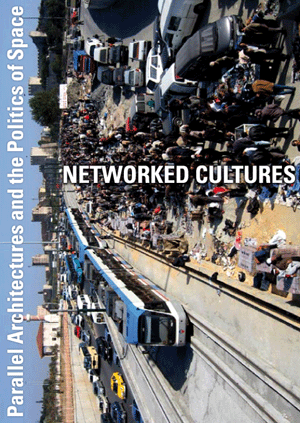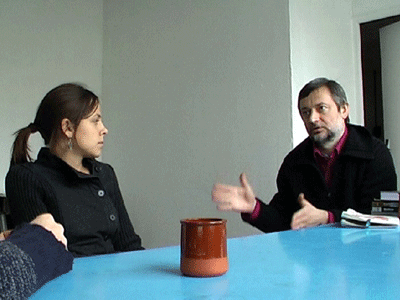_loginregistrieren_database_5 Factories - Worker Control in Venezuela Dario Azzellini & Oliver Ressler _ALMOSTREAL ECF _AnArchitektur Jesko Fezer _Arizona Road Azra Aksamija _Balkan Konsulat rotor _Bata-ville: We are not afraid of the future Nina Pope + Karen Guthrie / www.somewhere.org.uk _Black Benz Race krcf in collaboration with Felix Stalder, Arben Gecaj, Faton Topalli and Osman Osmani _Black Sea Files Ursula Biemann _Camp La Jolla Military ParkOwen Mundy _CHANGE REALITY: Renaming the Streets of Zagreb REINIGUNGSGESELLSCHAFT _Conceptual Paradise. There is a place for sophistication Stefan Roemer _de-regulation Irit Rogoff, Kutlug Ataman, Stefan Roemer_news ____________Bloomberg SPACE, London ____________Kumu Art Museum Tallinn ____________Open Space, Open Systems - Vienna ____________CAA 2011 Conference, New York ____________Forum Stadtpark, Graz ____________Symposium, Istanbul ____________lungomare, Bozen/Bolzano ____________Metropolis Biennale 2007-17, Copenhagen ____________new publication available now ____________Mestna Galerija, Ljubljana ____________Livestream of Networked Cultures documentary ____________ |
_Conversationsatelier d'architecture autogérée (aaa)
Constantin Petcou and Doina Petrescu co-founded aaa (atelier d’architecture autogérée) in 2001. aaa is a research and action platform revolving around urban mutations and the cultural, social and political practices emerging in the contemporary city. Its team has a variable geometry and includes architects, artists, researchers, residents and users of the spaces it creates. In the La Chapelle area of northern Paris aaa has initiated a series of self-managed projects that encourage residents to access and critically transform temporarily misused or underused spaces. This strategy valorises a flexible and reversible use of space and aims to preserve urban biodiversity by encouraging the co-existence of a wide range of lifestyles and living practices. aaa is currently involved in the European Platform for Alternative Research and Action on the City (PEPRAV).
PM/HM: How would you describe the motivations that formed the basis for atelier d’architecture autogérée (aaa) and what influence did these have on the structure of your work, for instance, on the ECObox project you initiated in your own neighbourhood of La Chapelle? Constantin Petcou: Two of the initiators, Doina Petrescu and myself, are from Romania and when we came here we didn’t know anything about liberal architectural practices. And maybe just because we were new to the West, we had the illusion we would find something more promising and visionary. We were quite disappointed to discover that liberal practices in architecture didn’t have real political and social concerns. We knew that in the UK and the US, where there was much less work at the time, a few architects were trying to develop other strategies. Step by step we attempted in the 1990s to develop another approach, one that was more political but independent from political lobbies and experimented with other ways of producing space. We started to develop strategies and tactics for provoking more from a user’s perspective and acting as a “catalyst”. We tried to re-position ourselves – neither at the top, nor at the bottom, but somewhere in between. Like grass in Deleuzian terms. And it was from this position that we tried to create transversal networks. The classic short-term, abstract and top-down assignment doesn’t really work when one wants to invent practices embedded in urban realities and address the complex, mobile, transcultural dynamics of everyday life in a big city. In a way it’s difficult to say when all this started. It actually began before our experiences with aaa: in the 1990s we had tried to develop some projects in Romania. All the radical changes had left a legal void in the political system of Eastern Europe. So we took on a bricolage approach to our projects. We started aaa with the ECObox project in Paris, and for three years it was about the only aaa project, because it took all our energy. We were involved in this project in an everyday kind of way, because we were also inhabitants there. In other words, we lived in the area, which meant it was not an external project. It was a very interesting experience but also very intense and more or less a full-time activity. We created the preconditions for the project and at the same time for the group using it. Our strategy was to promote self-management. The first three years was a formative period for the group. When we had to move and the project disappeared as a “place”, it lived on as a group and this group was able to claim another space. Today ECObox has a new space and has become another self-managed, dynamic project. For a few months now, it has been run by a users’ organisation created by the people involved in the project. We keep in contact and try to maintain some kind of synergy. PM/HM: Regarding the involvement of various communities and different professions or different kinds of activist groups, how did the ECObox project become a real communal project and not just a form of collaboration between different professionals on a temporary art project? Constantin Petcou: Our tactic is to work over time with very long-term commitments and something like an open translocal platform. A number of conditions are necessary for such a project to survive and the first one is to give it time, to wait and not to propose anything specific at the beginning. In the case of ECObox, we tried – for political and pragmatic but also ecological reasons – to initiate a self-managed space. A precondition for this was to give ourselves a lot of time to build up people’s confidence in us, whether they were from Europe, Central or North Africa, India or elsewhere – people who had different cultural backgrounds and, I would even say, different value systems. What was more, they all had different notions of an institution, local life, collective space, etc. So, we had to give people time to understand and agree on what kind of (non)institution, group or organisation we were, because it was not possible to classify us within existing ones. And bit by bit, as people started to talk to each other, a lot of other people arrived and began doing things, because somebody had told them that there was this place. That was how it worked, though not without conflicts, of course. We tried not to communicate too much through the media, because it was much better to let the information circulate through a physical network, one that had a certain proximity. Thus, over time, we succeeded in establishing a physical network that was both transcultural and -social. Though somehow the network created itself, we didn’t actually do anything directly. We just enabled the situation, a possibility, and people generated the dynamics themselves. So this was one precondition. A second one had to do with claiming space and making it available for experimentation with what we might call a translocal platform. By chance, we managed to obtain a huge space, and this space – plus all the mobile infrastructure we established (e.g. a series of mobile modules with micro-infrastructures for cooking, sound & media, reading & writing, joinery, composting, rainwater) – caused people gradually to propose certain activities: cultural events and economic activities, political meetings and debates. In fact, we didn’t do much but rather let things be, creating a possibility for things to appear or happen, enabling a certain momentum, something that doesn’t happen in a “normal” institution or urban structure. Nobody expects people to propose an activity and, for us as artists, this was very interesting. Of course we also had our own network of friends and connections, which was important at the start and gave us some initial orientation, but everything afterwards depended on the people involved. They built up another network whose dynamics were multi-layered: for example, last year this network focused more on media, i.e. tactical media. Before that, the network had been oriented more towards architectural eco-design and alternative energy, because these were compatible with the interests of the people involved. So it has all been diverse and flexible. Everything depends on who gets involved – ultimately I think we can speak here of temporary networks that create lasting projects. PM/HM: How can one share the experience of such a networked project with a more translocal audience, be it through exhibitions, such as the berlin biennial for contemporary art, as in your case, or archival structures? Constantin Petcou: Our strategy is not just “architectural” – it’s also political. And in a way, the project is both social and artistic. When I say artistic, I mean “art” as a “free space” for architecture. For an “architect”, ways of producing space are very standardised and restricted by norms and regulations; whereas for an “artist”, there’s much more freedom to do things. So we wanted to go beyond the norms of architecture by opportunistically using another mode of spatial production, i.e. an “artistic” one. But such transference can be critical. We know, of course, that an art space or commission can also be rather limiting at times, but what we wanted from it was the opportunity to criticise both architecture and art production by doing things in a different way. In this sense our approach is both interdisciplinary and extradisciplinary. We try to be extradisciplinary as architects and critically push the limits of our profession, which is, I guess, one of the reasons why we’re invited to exhibit, to show in such spaces. In reality, however, we don’t show anything in a usual way. Rather we use the art space to produce problems and to share them with others. This was the case with the berlin biennial and the GAK (Gesellschaft für Aktuelle Kunst) in Bremen, as well as other art events and venues where we used the exhibition to create a workspace for a self-organised team, and the institutional framework as an opportunity for people without means to do critical work and have visibility: the spaces we have created fluctuate between being a public and/or meeting space, workshop or even personal space, if necessary. In Berlin we had a small space for “cooking ideas” with two conference tables; step by step we used the wood from the tables to construct a mobile urban kitchen, which was then taken out into the city. What we showed or, let’s say, “made visible” was a meeting-working-cooking space accessible to a large number of people. All these experiences have been documented as processes, which means we now have a rather big video archive that includes most of the projects we’ve participated in. And we hope that one day, in addition to capturing memories of our past experiences, this archive will become a resource for others. Transmission might also be called a precondition for projects of this kind. We transmit projects in many ways: first know-how is passed directly on to others while the project is being implemented and experienced (as was the case with ECObox); and then specific transmission tools are created, for instance, an archive accessible under certain conditions to everybody interested, an infrastructural base that can be borrowed or shared as well as long-term assistance and friendship.
|
_broadcasts_conversations+ Ana Dzokic and Marc Neelen+ Ayreen Anastas and Rene Gabri + atelier d'architecture autogérée (aaa) + Asya Filippova + Sophie Hope and Sarah Carrington + Branca Curcic + Christoph Schaefer + Campement Urbain + Claudia Zanfi + Despoina Sevasti and Poka-Yio + Erden Kosova + Helmut Batista _textsRadio as Spatial Practiceby: Paulo Tavares Survival Kits: Artistic Responses to Globalizationby: Marga van Mechelen What Ever Happened to Cultural Democracy?by: Sophie Hope I don't know how to explain ...by: Anca Gyemant Trading Placesby: Peter Moertenboeck & Helge Mooshammer Milosevic as Architectby: Srdjan Jovanovic Weiss When the Unavoidable Knocks at the Door ...by: Gulsen Bal Tracing Translocality: The BlackBenz Raceby: Felix Stalder travelling lexicon towards a global positioning systemby: Celine Condorelli |
